Double Widowhood Part 1
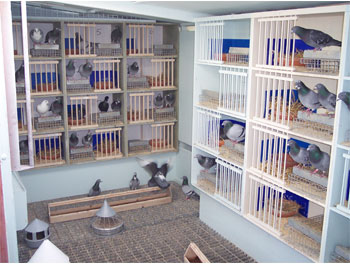 I would like to first of all talk about some of the benefits of the widowhood system, then the choice of birds, the loft and fittings and finally feed and care.
I would like to first of all talk about some of the benefits of the widowhood system, then the choice of birds, the loft and fittings and finally feed and care.
I have raced the double widowhood system for almost twenty years. Before this I raced my birds on the natural system for about fifteen. The widowhood system ( like the new darkening system for youngsters) seems to carry some mystique and therefore inhibits many potential candidates. I myself was almost discouraged by a fellow club mate back in the 70’s. He was very negative and made it sound like two or three times the work. Nothing could be further from the truth and I am very glad that I was not swayed by his comments.
The overwhelming most important benefit of the widowhood system as I see it, is the amount of oxygen that is available for the pigeons. Never underestimate the importance of this statement. In a typical natural loft you will have at any given time four times the occupants of a widowhood loft, especially when you add the babies in the nest with the parents. Again, this year in young birds, the point about the need for space and oxygen was reinforced to all of the fanciers in my area. Two of the hottest lofts in young birds this year lost a good portion of their young birds early in training and then with the remaining birds annihilated the competition. These remaining birds were able to reach super form because the extra loft space resulted in more oxygen for each individual bird. I have two articles coming up on the theme of space and oxygen which I feel is paramount if you are going to fly competitively. The second vital benefit is the absence of stress in the widowhood loft. On those days when I am able to come home for lunch I always make a point of looking in on the widowers. Almost always they are lying down on one wing in their nest box catching some sun through the plexi-glass. The hens’ section is generally a mirror image as they too are resting in the sunlight. Unfortunately, the natural birds are always moving about with either someone driving, chasing, fighting, laying etc. All of this produces stress and does not allow the birds to rest. There are many more benefits to the widowhood system, but these are two highlights.
Now, let’s talk about the birds. First of all let me say if your birds have not been competitive on the natural system then they will not be competitive on the widowhood system. It is a fallacy that the quality of a pigeon will be enhanced on this system. The health will most certainly be improved, but not the quality of the individual bird. My advice for those who have not been competitive on the natural system is to try the widowhood system and in the first year quickly cull all of those individuals who do not secure two or more good prizes. It may mean for some that they need to almost start over, but my feeling is that in the long run, you will become more competitive. Personally I would rather race competitively with five pairs of widowers than to be a slave to twenty-five pair of natural birds. If you have a number of birds that have scored one or two prizes on the natural system then I would think that under the widowhood system they would at least double their winnings.
Next a brief discussion of the loft and the fittings. Virtually any natural nesting box can be used for the widowhood system without any alterations. It is best if you have a separated section for the hens, but this can be achieved with a little ingenuity. Personally I like a nesting box to have two distinct sections , one where the cock resides and the other for the hen to inhabit. The one section would remain closed for most of the season except for rearing youngsters and on race days. My preference is for the cock to have a block of wood to stand on and for this block to be secured to a one by one inch mesh. This will allow for all of the droppings to stay clear of the bird and makes it easier for cleaning. If you have perches in your natural side I would take them out. I want that cock bird to stay in his nest and defend it with his life. We have not even begun to tap the area called motivation, but have merely scratched the surface. More on this in a later article. Count how many nest boxes you have in your loft and if you have more than ten for an area of fifty square feet then think about leaving one or two empty. I realise our mind set is that more is better than less , but on the widowhood system I believe you will learn that you can do better with less. Just a small tip, once you have chosen one cock for each nest box add one extra cock and let him stay on the floor. John Cooper and I saw this while on a trip to New Jersey at Dr. Kazmierczak’s loft. Whenever he loses a cock during the year he then replaces him with the one from the floor. This cock now has a territory to defend which gives him extra incentive. I tried this technique this year and was extremely pleased with the excellent results that this particular pigeon achieved.
A common drawback I hear from fanciers who are contemplating the widowhood system is that they have nowhere for their hens. Sometimes this can be a problem , but most times it can be worked out using a little ingenuity. Perhaps an example will clarify the point. A good friend of mine who always kept about twelve pair of natural racers would lament the fact that working shift work and having no place for the hens prevented him from widowhood racing. We discussed it many times , but he seemed reluctant to change systems. He was down at my place one day and was surprised that mid-way through the year I was culling a widowhood hen. He asked what I would do with its mate. I told him that it really did not matter to this particular bird and that I still had last years mate if he became obstinate. Almost always a cock will take any hen presented, but I make a point to stay around to make sure. My friend then felt that by placing his hens in with the young birds and perhaps cutting down on the numbers bred that he might be able to try it. Well he did and the rest is history. I do not think he will ever go back to the natural system. Each week he has twenty-four potential candidates from which to choose instead of about eight to twelve on the natural system (due to various nest conditions). Immediately he noticed an increase in form and health. Also even though he was on shift work he made the birds conform to his schedule and not vice versa with excellent results. As he says it’s a pleasure to watch them exercising freely knowing that I do not have to drive them down the road for yet another toss.
We have very briefly discussed benefits, the birds and the loft. Next I would like to explain what I do in the fall in order to prepare the birds for next year.
During the fall the most important factor is that the birds finish their moult. You must also make sure that the yearlings know and will defend their boxes. To put a beautiful finish on the moulting birds you must include those seeds which promote excellent feathering. These oily seeds include rape, red/white millet, hemp, peanuts, safflower, niger, sunflower hearts, flax etc. Each and every day they should receive a small portion of this mixture. I do not measure in ounces the amount of feed that I give to the birds, whether it be their main meal during the winter or one of their two meals during racing. The amount and types of grain will change throughout the year depending on the work that is being demanded of the birds. I never overfeed the birds because I do not feel that they benefit from this practice. I tend to observe them closely and monitor the amount and the make-up of the grains according to the time of the year.
In the fall baths are indispensable. On those days when I can make it home for lunch I quickly fill the bath pans for all of the birds before lunch and quickly empty them just before I go back to teaching. I have in the past tried to add to the bath just about every concoction on the market known to man. In the final analysis I can not say that one is superior to the other. I personally do not have any preference in this area, but I am always willing to try any new ideas that make sense. Observations during bath time are most revealing. I look for the bird that after splashing around etc. comes out and appears perfectly dry. Any birds who show signs of wetness on their flights, breast feathers, tail etc. are obviously not in good health. Generally speaking, I am very suspicious of birds who do not take a bath. Personally, I have found that observations during bath time can indicate what kind of success you might have that year. I like to see the bath water chalk white after the birds bathe. If not then the birds do not have any bloom. This lack of bloom can predict a poor racing year.
For me widowhood is a challenging, fulfilling racing method. I find it less time consuming and definitely more stimulating. Each member of the team reaches a higher level of performance and maintains this level for a longer periods of time.
- Double Widowhood Part 1 <= You Are Here
- Double Widowhood Part 2
- Double Widowhood Part 3
- Double Widowhood Part 4
Double Widowhood Part 1 by John Marles
The Leading Online Pigeon Racing and Racing Pigeons Magazine – The Pigeon Insider

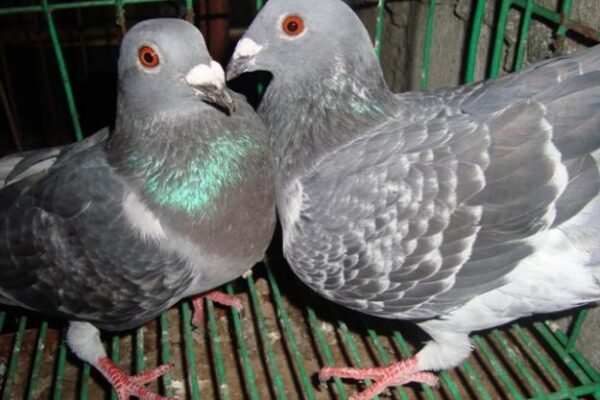
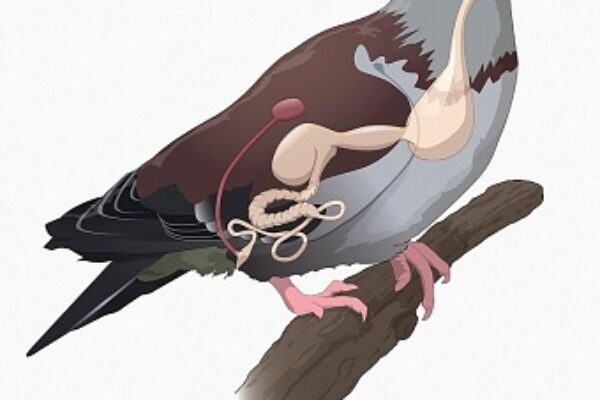
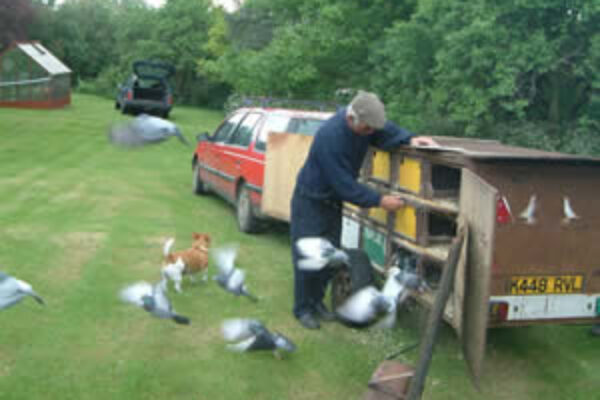
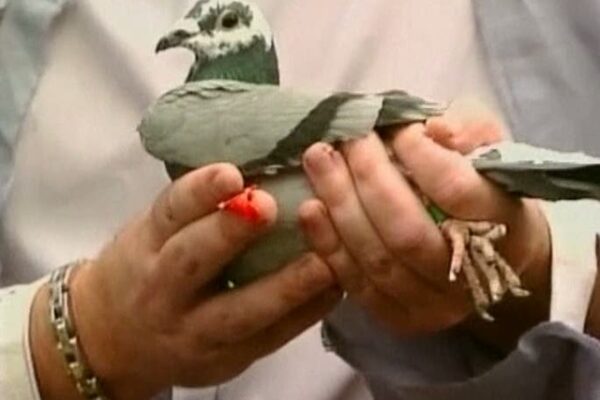

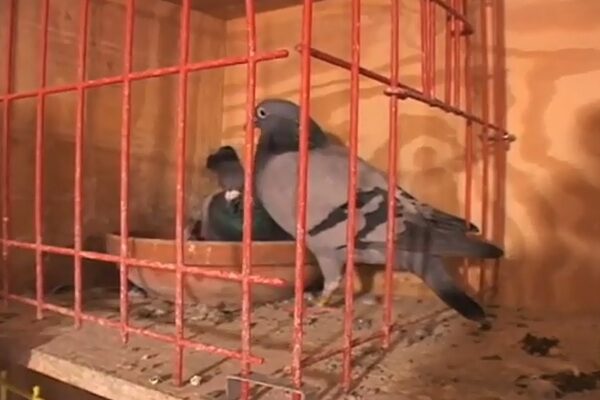


Dear friend, I go through ur mails throughly. In that the widow system is good and I need the detailed explaination of the same. And for India which postition is preferable for placing loft?. please do the needful. thanks and regards, balaji
Don’t find it interesting.